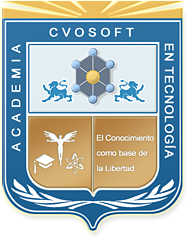
✒️La transformación digital de SAP Fiori
La transformación digital de SAP Fiori

What is SAP Fiori?
SAP Fiori is SAP's design language. Over the past decade, design has matured and is now seen as a vital part of the value chain. A design system needs to encompass values, principles, and practices that promote a shared mindset. These elements form the foundation for various design languages tailored to different interaction styles, platforms, or domains, maintaining a consistent mentality.
SAP Fiori User Experience (UX)
SAP Fiori is the user experience (UX) for SAP products. UX refers to how users interact with a solution. A good UX is more than just good design; it offers real business benefits. In SAP, this design system is embodied by SAP Fiori.
Design Systems
Design systems systematically describe a product's design, making it scalable and visually consistent across different products, fostering a connection between them.
Transition from SAP GUI to SAP Fiori
SAP Fiori replaces the old SAP GUI interface, aiming for a unified UX across all SAP products. Based on the SAPUI5 framework, Fiori applications are compatible with any device and screen size.
Benefits of SAP Fiori
User-Centric Development
SAP Fiori applications are developed with the user's perspective in mind. They are simple, relevant to specific user roles, and designed for specific tasks and activities.
Simplified Transactions
Fiori breaks down large standard SAP transactions into smaller, user-friendly applications, similar to the concept of apps on smartphones or tablets, each dedicated to a specific function, such as creating a sales order.
Key Dimensions of SAP Fiori
Design
Concept
Technology
SAP needed to ensure its applications were accessible on all platforms and devices. This required a user interface (UI) that wasn't overly complicated. A complex UI might work on a desktop but is impractical on a smaller mobile screen. Hence, SAP developed an intuitive, consistent, and simple UX, prioritizing users' needs, saving them time, and boosting productivity.
Decomposition Process
Breaking down complex Transactions into smaller ones and being destinated for a specific role.
Complex transactions in SAP can be overwhelming due to numerous fields and settings. For instance, the transaction VA01 for creating a sales order can be challenging for sales representatives who prioritize making sales over navigating complex interfaces. SAP simplified these transactions by breaking them into smaller, role-specific applications.
Evolution of SAP Fiori
- Fiori 1.0: Launched with 25 simple applications for various roles like managers, employees, and sales reps.
- Fiori 2.0: Introduced more powerful models for desktop users, supported Android and iOS, and included conversational UX with SAP CoPilot.
- Fiori 3.0: Aims for a more intelligent and unified experience across the SAP ecosystem, with enhanced AI-driven SAP CoPilot and a new minimalist design theme, Quartz Light. It replaces traditional tiles with cards for better information display.
SAP Fiori Application Classification
Types of Fiori Applications:
- Transactional: Facilitates task-based actions like creating or changing documents. These apps provide simplified views and interactions with existing business processes.
- Analytical: Focuses on analyzing KPIs, offering real-time insights and visual overviews of complex topics for monitoring purposes.
- Search and Exploration: Allows users to navigate through layers of information, providing a 360-degree view of essential data and contextual navigation between related objects.
SAP Fiori Apps Library
The SAP Fiori Apps Library helps users explore all relevant content for the SAP Fiori Launchpad. It includes transactional, analytical, and search applications across various roles and business functions. Users can find applications based on industry, business line, individual roles, backend systems (ECC or S/4HANA), and databases.
Fiori Launchpad (FLP) - Central Access Point
The Fiori Launchpad (FLP) is the central point for accessing Fiori applications. It provides services like navigation, personalization, integrated support, and application configuration. Users can access applications based on their roles, customize the homepage, and use tiles for quick access to essential tasks.
Components within the Fiori Launchpad (FLP)
Let's discuss some important components within the Fiori Launchpad (FLP):
- Tiles: Each application is represented as a tile.
- Tiles can represent a specific Fiori application or link to another page with a group of tiles.
- A tile connects the FLP to the application implementation in the system, ensuring the correct application launches with the right parameters and displays relevant information.
- Tiles are created in catalogs, which collect all applications within a solution area.
- Applications, tiles, and catalogs are provided by SAP but can also be created by clients.
- Groups and Catalogs: These are key concepts in FLP.
- Catalogs: Predefined collections of Fiori applications based on roles or specific users. They provide an overview of all applications available for user roles and business processes. Tiles must be added to a catalog before they can be included in Groups.
- Groups: Subsets of catalogs that guide users through the FLP by listing all available Fiori applications for a specific group. Users or administrators can create groups for easy access to applications.
Managing Groups and Tiles
- Users can reorganize groups and tiles, create new groups, and add or remove tiles from existing groups.
- Tiles are organized in catalogs containing all the technical information to launch an application.
- To display a tile in the FLP, it must be integrated into a group. Groups can be created centrally or by users.
- In edit mode, users can remove tiles from groups, create new groups, and reorganize tiles.
- When adding a new tile to a group, users can select tiles from all catalogs assigned to their role.
Types of Tiles
- Static: Show predefined, static content like text and icons.
- Dynamic: Show dynamic numerical values, such as pending purchase order approvals.
- KPI: Show key performance indicators and alerts or reports.
- News: Show photos and live feeds from various RSS feeds with configurable update frequencies.
Main Sections of the Fiori Launchpad (FLP)
- User Menu: Allows users to customize settings like selecting the display language.
- Navigation: Provides a home button to return to the main page from any application.
- Applications: Displayed as tiles on the FLP, these can be static, dynamic (showing informative numbers), or KPIs. Users can personalize the home page by grouping, moving, and deleting tiles.
Available Functions in FLP
Fiori 2.0 Features:
- User Area: An enhanced menu giving access to frequently used applications and recent activities.
- Notifications: Quick access to information and tasks, including simple actions.
- Workspace: Additional navigation options, including a top navigation menu.
Personalization
- Users can add applications from assigned catalogs, remove unwanted applications, and modify applications for filtered report results.
- The user area can display a photo, include collaboration functions, and adjust recent activities and frequently used applications.
SAP CoPilot: A digital assistant that allows interaction with the ERP using natural language, similar to Alexa or Siri. CoPilot uses machine learning and natural language processing to enhance user interaction and operational efficiency.
Keyboard Navigation: FLP can be fully operated via keyboard.
- Main Sections: Header, Anchor Bar, Groups, and Footer (optional).
- Navigation: Use F6 to move down, Shift F6 to move up, Page Up/Down to switch groups, and arrow keys to move between tiles. Tab can also be used to cycle through elements.
- Accessibility: High-Contrast Black theme for visually impaired users, screen reader support, and descriptive labels for content.
Clients and Integration Platforms
FLP Access Clients:
- Web Browser: Compatible with HTML5 browsers like Safari, Chrome, Internet Explorer, or Firefox.
- SAP Business Client: Available from version 6.0, enabling connection to the FLP.
- SAP Fiori Client: Available for mobile devices on Apple, Google, and Microsoft platforms.
Integration Options:
- SAP Enterprise Portal (EP)
- SAP Cloud Platform (CP)
- SAP Mobile Platform (SMP)
The easiest way to access FLP is through a compatible HTML5 browser by entering specific URLs. SAP Fiori Client is also available for free in native app stores for tablets and smartphones.
Sobre el autor
Publicación académica de Jaime Eduardo Gomez Arango, en su ámbito de estudios para la Carrera Consultor en SAP Fiori.
Jaime Eduardo Gomez Arango
Profesión: Ingeniero de Sistemas y Computación - España - Legajo: SW34C
✒️Autor de: 149 Publicaciones Académicas
🎓Cursando Actualmente: Consultor en SAP Fiori
🎓Egresado de los módulos:
 Disponibilidad Laboral: FullTime
Disponibilidad Laboral: FullTime
Presentación:
Ingeniero de sistemas y computación con 8 años de experiencia el desarrollo frontend & backend (react/node) y en cloud (aws), actualmente desarrollando habilidades en sap btp, ui5, abap y fiori.
Certificación Académica de Jaime Gomez
















